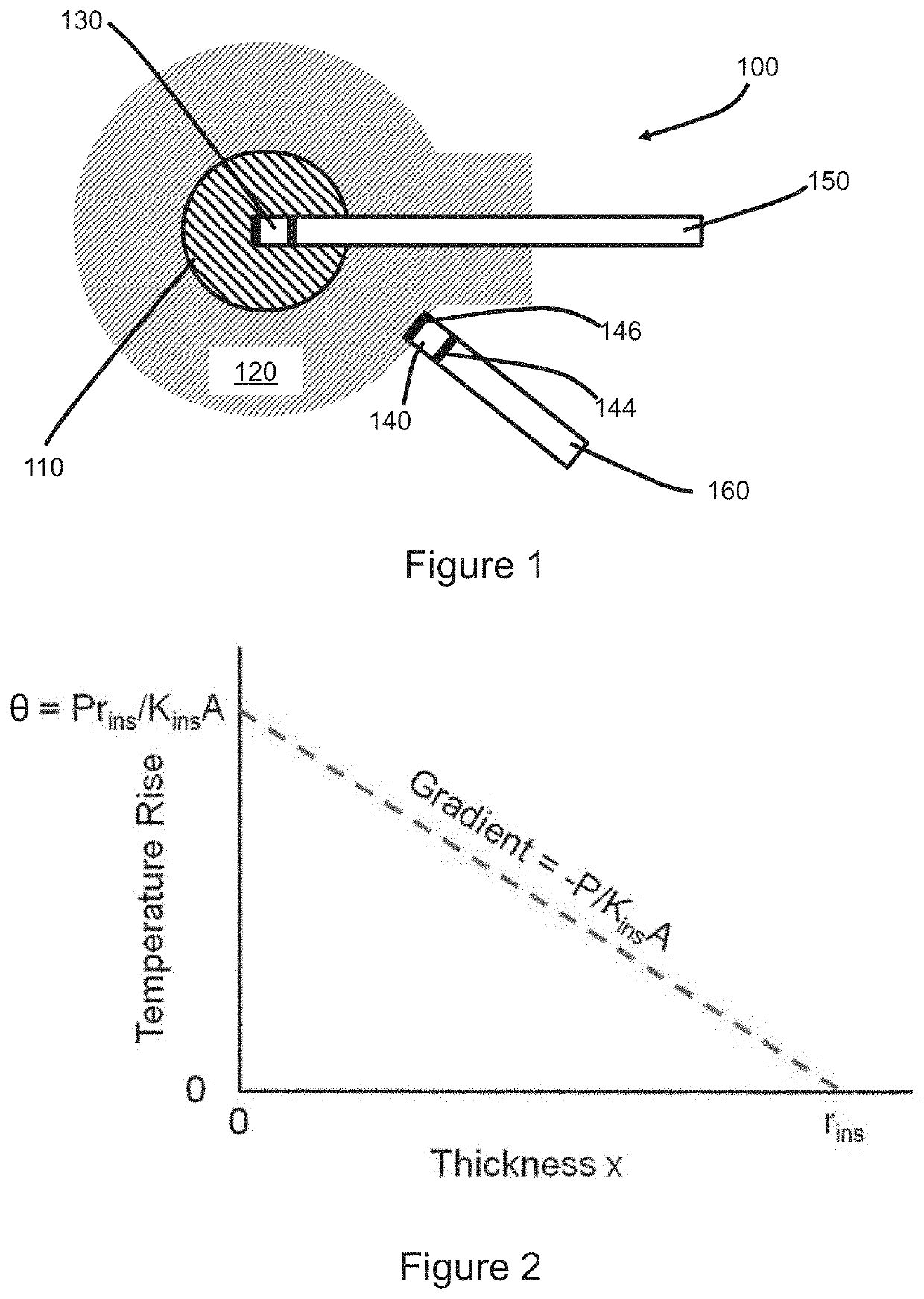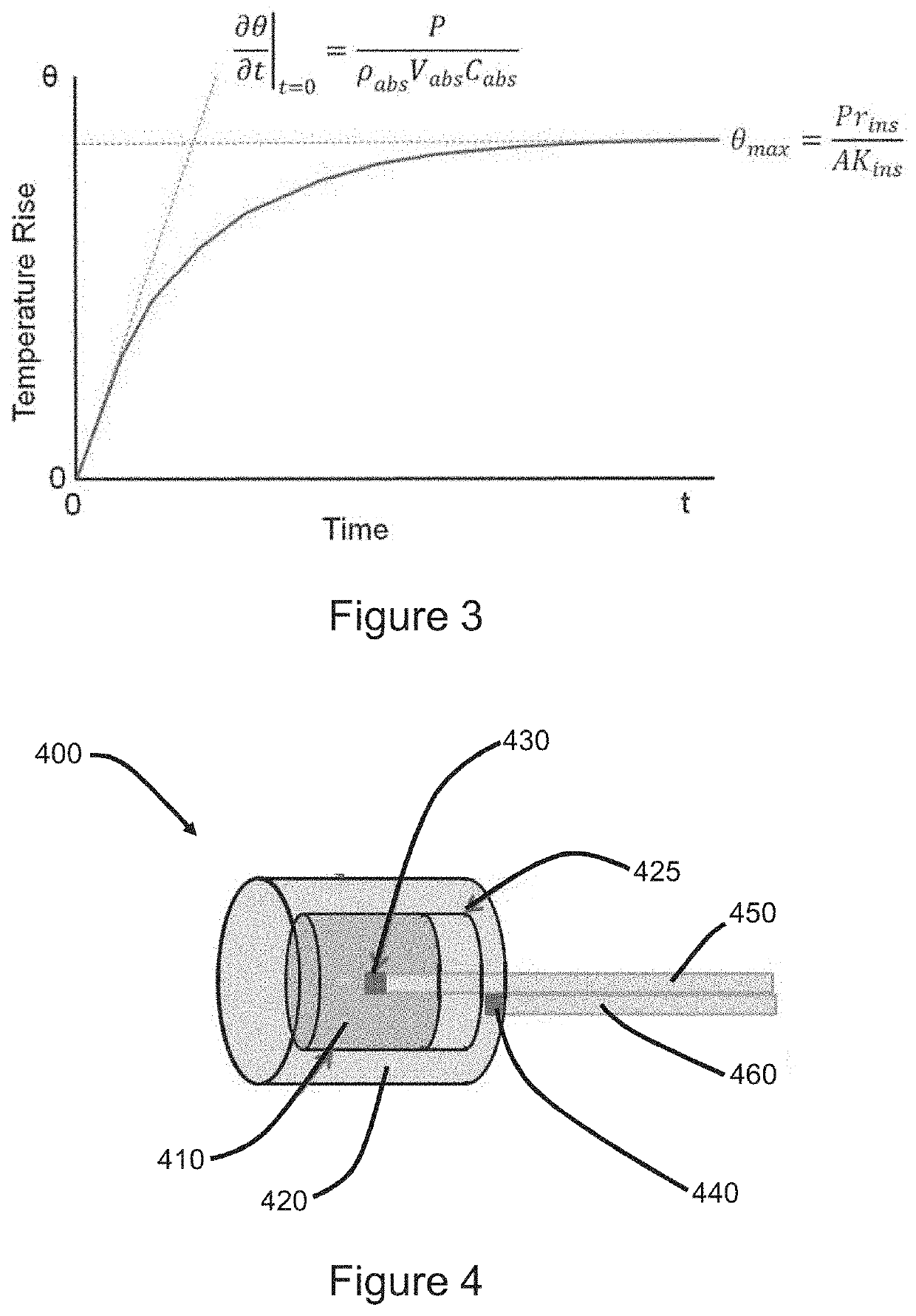Electric field sensor
a technology of electric field and sensor, which is applied in the direction of power measurement by thermal methods, measurement devices, instruments, etc., can solve the problem of large temperature difference between the first and second temperature sensors
- Summary
- Abstract
- Description
- Claims
- Application Information
AI Technical Summary
Benefits of technology
Problems solved by technology
Method used
Image
Examples
Embodiment Construction
[0028]A device 100 according to a first embodiment of the present invention is shown in cross section in FIG. 1 and is arranged to determine the strength of an ambient radio frequency (RF) electric field. Device 100 comprises a radio frequency absorber material 110 surrounded by thermal insulation 120. The thermal insulation is selected to be transparent to RF radiation. Embedded in the absorber 110 is a first temperature sensor 130. A second temperature sensor 140 is located outside the thermal insulation 120. Both the first and second temperature sensors comprise a material whose optical response varies with temperature. Accordingly the first and second temperature sensors allow the temperatures to be determined by analysing their response to an input optical pulse. In the present example the sensors can be interrogated by transmission of an optical pulse from a control unit. The control unit is connected to the first and second temperature sensors by optical fibres 150 and 160 re...
PUM
 Login to View More
Login to View More Abstract
Description
Claims
Application Information
 Login to View More
Login to View More - Generate Ideas
- Intellectual Property
- Life Sciences
- Materials
- Tech Scout
- Unparalleled Data Quality
- Higher Quality Content
- 60% Fewer Hallucinations
Browse by: Latest US Patents, China's latest patents, Technical Efficacy Thesaurus, Application Domain, Technology Topic, Popular Technical Reports.
© 2025 PatSnap. All rights reserved.Legal|Privacy policy|Modern Slavery Act Transparency Statement|Sitemap|About US| Contact US: help@patsnap.com



